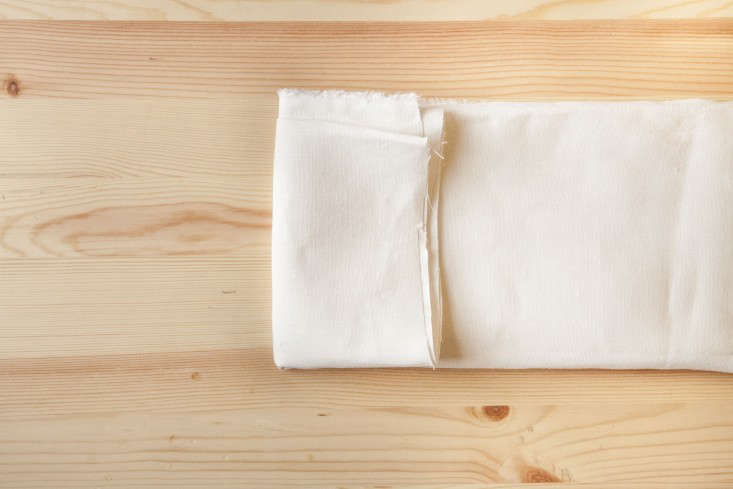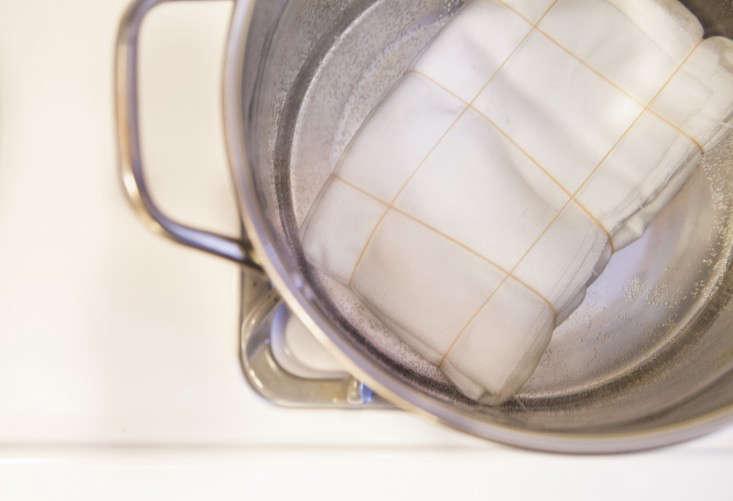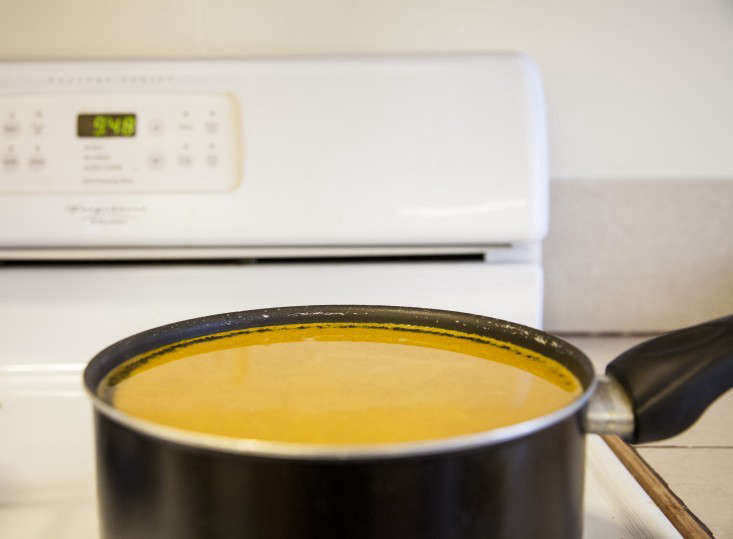Native to Southern India and identifiable by its show-stopping yellow, turmeric has been a staple in cooking and medicine for thousands of years. The spice, a member of the ginger family and a key ingredient in curry, has countless health benefits.
Turmeric is a natural alternative to chemical dyes, too: add a pinch or two to tint buttercream frosting, or pair it with red annatto to turn cheese orange. I’ve been experimenting with techniques for using turmeric to dye fabric, and here’s my favorite. Follow this simple tutorial to create your own turmeric-tinted tablecloth in a shibori tie-dye pattern.
Photography by Dalilah Arja.
Materials
- Natural fabric (cotton, linen, silk, or wool), unhemmed or hemmed and sized to cover your table (My fabric measured 4.5 by 3 feet; if you use something a lot bigger, increase the amounts of the ingredients or expect more subtle results.) Tip: Pillowcases also work well for this project.
- 1/4 cup turmeric
- 4 cups vinegar
- Rubber bands or string to secure folded fabric
- Water
Instructions
Start by folding your fabric (or, if you want a solid color, jump to Step 4 and dye the fabric unfolded). Your folding pattern can be as random or as methodical as you like. I did a loose interpretation of a shibori fold, which is primarily used in Japanese indigo dying. See our post on Shibori Dyed Indigo for examples. I picked this method because I like the square pattern it creates.









Interested in learning more ways to create chemical-free dyes? A New York textile designer repurposes spent flowers in Shopper’s Diary: Natural Floral Dyes and Silk Scarves, from Cara Marie Piazza, and colorist Deepa Natarjan creates elegant pigments from organic materials in DIY: Seasonal Vegetable Dye: Holiday Edition.









Have a Question or Comment About This Post?
Join the conversation